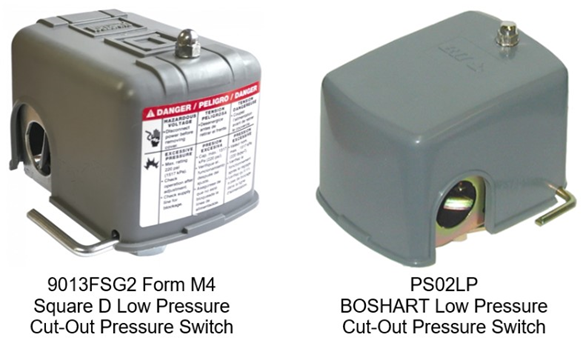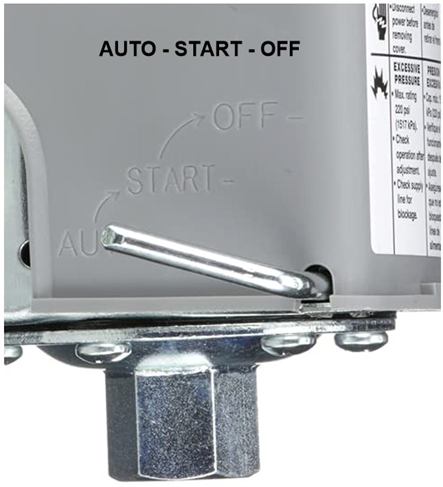Is my low-pressure cut-off switch defective? The contacts are open on my new low pressure cut-off switch, they are closed on my old pressure switch.
Is my low-pressure cut-off switch defective? The contacts are open on my new low pressure cut-off switch, they are closed on my old pressure switch.
 Low pressure cut-off switches will have contacts that are in the “OPEN” position from new. The fact that the contacts are not touching, like they did on your standard pressure switch, is not a problem. There is nothing wrong with, nor is any adjustment required to get the contacts to contact each other.
Low pressure cut-off switches will have contacts that are in the “OPEN” position from new. The fact that the contacts are not touching, like they did on your standard pressure switch, is not a problem. There is nothing wrong with, nor is any adjustment required to get the contacts to contact each other.
Low pressure switches are designed to protect the pump if a low-pressure situation occurs. This is the case when the switch is not in operation. The contacts will always be open in the box as the switch is in a low-pressure situation. This is the opposite of a standard pressure switch.
In system operation, the contacts will open, and remain open, if the pressure to the switch diaphragm drops 10 PSI below the cut in pressure setting. For example, a 30-50 pressure switch will open the contacts and shut down the pump if the pressure drops to 20 PSI.
 To start up the pressure system when using a low pressure cut-off switch, the lever on the side must be manually held in the “START” position until the pump builds up pressure to 30 PSI. At this point the lever can be released, and the switch contacts will remain closed. The pump will be in “AUTO” mode and will automatically operate between the 30 PSI cut in and the 50 PSI cut-out settings. If a problem occurs such as the well running dry or a burst pipe resulting in the system pressure dropping to 20 PSI or less, the lever will trip, and the contacts will open stopping the pump. A manual restart will be required after the cause for the low pressure has been corrected.
To start up the pressure system when using a low pressure cut-off switch, the lever on the side must be manually held in the “START” position until the pump builds up pressure to 30 PSI. At this point the lever can be released, and the switch contacts will remain closed. The pump will be in “AUTO” mode and will automatically operate between the 30 PSI cut in and the 50 PSI cut-out settings. If a problem occurs such as the well running dry or a burst pipe resulting in the system pressure dropping to 20 PSI or less, the lever will trip, and the contacts will open stopping the pump. A manual restart will be required after the cause for the low pressure has been corrected.
Additional Resources:
https://support.boshart.com/what-is-a-pressure-switch-with-low-pressure-cut-off-feature
https://support.boshart.com/why-is-my-low-pressure-cut-out-switch-nuisance-tripping
